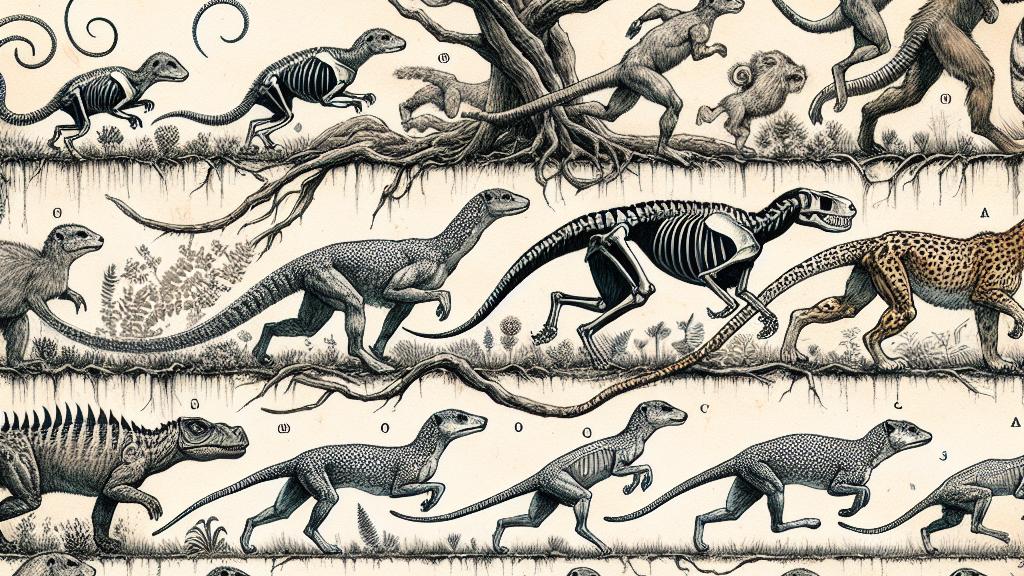Unveiling Mammal Evolution: From Sprawled to Upright Posture
Overview
- Delve into the fascinating journey of mammals as they evolve from sprawling ancestors to upright beings.
- New research skillfully merges biomechanics with fossil studies, redefining our understanding.
- Explore how this intricate transition unfolded significantly later than scientists once believed.

The Evolutionary Journey
The story of mammal evolution is not just a tale; it is a grand saga of adaptation and survival. Initially, mammalian ancestors called synapsids sported limbs that extended outward, much like today's lizards, allowing them to maneuver through a world dominated by dinosaurs. Imagine these small, nimble creatures darting through underbrush and scrambling up trees, evading the jaws of giant predators. Over millions of years, these ancestors began to gradually change—their limbs started moving underneath their bodies, a major turning point in evolution. This transition enabled them to run faster and explore new niches, thus marking the rise of the upright mammals we recognize today, ranging from the cheetah to humans.
Complexities of the Transition
Recent research conducted at Harvard University offers groundbreaking insights into this complex transition from sprawled to upright posture. Surprisingly, the journey was anything but simple. Researchers, led by Dr. Peter Bishop, utilized innovative biomechanical methods alongside fossil analysis to uncover this evolutionary mystery. They compared various modern species, including the agile greyhound and the semi-upright alligator, to understand how anatomical alterations facilitated movement. This meticulous examination revealed that the evolution of posture was a layered process, intricately linked to environmental pressures and physical demands. For example, while dinosaurs flourished as mammal-like reptiles, those synapsids that developed stronger hind limbs ultimately paved the way for more effective locomotion in mammals.
Understanding Locomotion
Understanding the evolution of anatomy is crucial not only for paleontology but also for grasping how effective locomotion contributes to survival. Through the application of digital biomechanical models, the researchers analyzed the forces generated by the limbs during movement. Picture a sleek cheetah sprinting across the savanna, its body perfectly aligned and powerful, in stark contrast to a slow-moving alligator. This visual vividly illustrates the importance of upright posture in running speed and agility. By examining a range of species—from the ancient Dimetrodon to modern mammals—the study reinforces how these adaptive changes shaped the diverse mammalian forms we see today. It's a testament to the resilience and innovation of life, highlighting not just survival, but thriving in varied ecological niches.

Loading...